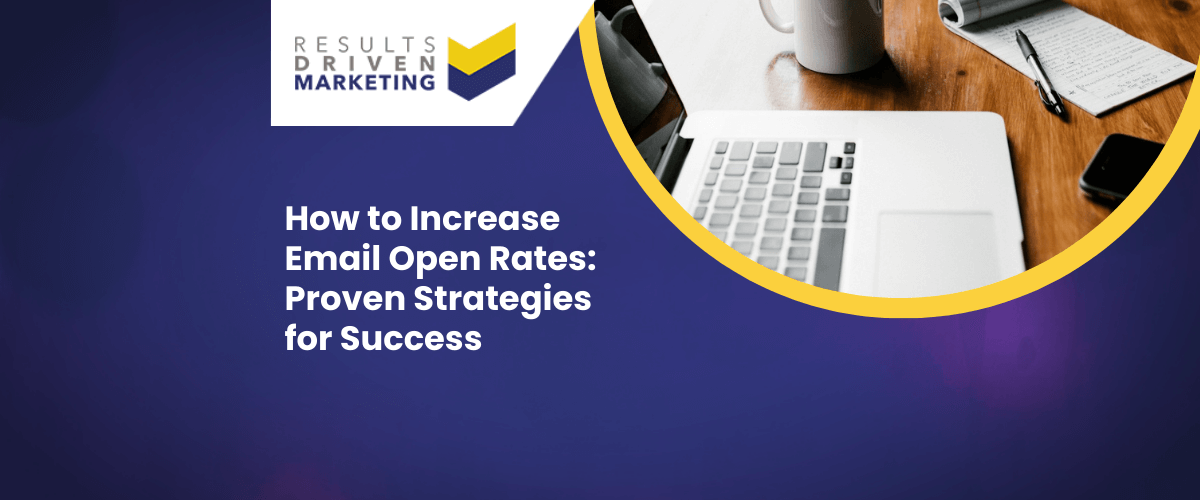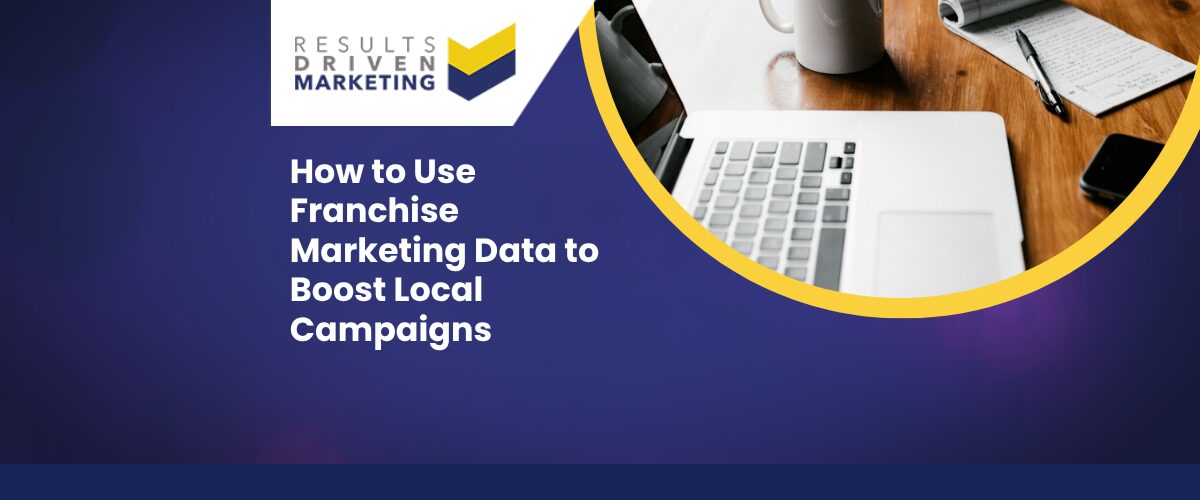
How to Increase Email Open Rates: Proven Strategies for Success
When it comes to email marketing, one of the most important indicators of success is your email open rate. In fact, the open rate is often the first sign that your message is resonating with your audience.
A strong open rate tells you that people are interested, curious, or invested in what you have to say—and it directly impacts how successful your campaign will be in terms of engagement and conversions.
Increasing email open rates isn’t just a nice-to-have. It’s a must-have for any brand or business serious about leveraging email marketing to build relationships and drive results. Every time you increase email open rates, you boost the likelihood of clicks, interactions, and ultimately, conversions.
High open rates not only help your campaigns gain traction but also improve brand visibility, strengthen trust, and increase long-term customer engagement.
This guide will walk you through proven strategies to increase email open rates, covering everything from creating impactful subject lines to optimizing email timing, personalization, and segmentation.
These strategies are built on real-world data and insights, offering you actionable steps that can make a difference in your next campaign.
For businesses looking to maximize results with expert tools, RD Marketing offers a variety of solutions. Our Email Address List Data can help you reach the right audience, while our Telemarketing Data enables more targeted outreach. Plus, our Data Cleansing Services ensure that your data stays up-to-date and optimized for better engagement.
Table of contents:
Why Open Rates Matter in Email Marketing
Email open rates are a critical metric in any email marketing campaign. Simply put, an email open rate is the percentage of recipients who open your email, and it’s calculated by dividing the number of unique opens by the number of delivered emails, then multiplying by 100.
Monitoring and optimizing open rates is essential because it gives you a direct insight into how effective your subject lines, send times, and audience targeting efforts are.
How Open Rates Impact Engagement and Conversions
Open rates don’t just show if your emails are being seen—they’re also a strong indicator of audience engagement. If your goal is to boost conversions, increase click-through rates, or even build brand loyalty, higher email open rates are the first step.
Why? Because every interaction starts with that initial open. The higher your open rate, the better chance your email has of prompting a click, generating a sale, or driving any other action you’re aiming for.
For businesses aiming to reach highly specific audiences, like those in specific industries or geographies, having accurate and segmented data can make all the difference.
For example, using B2B Data or Consumer Data, you can fine-tune your email lists to match the preferences and behaviors of your audience, increasing the likelihood of higher open rates and meaningful engagement.
The Link Between Open Rates, Sender Reputation, and Deliverability
Open rates also play a significant role in maintaining a positive sender reputation. Email providers track open rates and other engagement metrics to determine the quality of your emails. Consistently high open rates signal to these providers that your emails are valuable to recipients.
This, in turn, improves your sender reputation, which directly impacts your email deliverability—the likelihood that your emails will reach the inbox instead of being marked as spam.
However, if your emails consistently have low open rates, email providers may interpret this as a sign that your messages are irrelevant or unwanted, which can hurt your deliverability.
To ensure that your data is clean and accurate, RD Marketing offers Data Cleansing Services. This service removes outdated or inactive contacts from your lists, helping maintain a healthy sender reputation.
For those who operate internationally, working with International Email Lists can help you reach global audiences with optimized lists that are segmented by region, language, and market needs—key to keeping your open rates high across different regions.
Harnessing Personalisation to Boost Email Open Rates
In today’s dynamic digital landscape, businesses cannot afford to use one-size-fits-all marketing approaches. Personalisation has emerged as a potent tool in enhancing the efficacy of marketing tactics, particularly email marketing.
The mere act of addressing your audience by their first name can dramatically increase email open rates. But personalisation extends beyond that – it is about delivering relevant content to the right person at the right time. Let’s delve deeper into how you can leverage personalisation to boost email open rates.
Understanding Personalisation
At its core, personalisation in email marketing means customising the email content based on individual recipient’s characteristics, preferences, or previous interactions with your brand. It can range from including the recipient’s name in the subject line to providing tailored product recommendations.
The Impact on Email Open Rates
Personalised emails stand out in a cluttered inbox. It makes the recipient feel seen and valued, which naturally encourages them to open the email and engage with the content. According to a report by Campaign Monitor, emails with personalised subject lines are 26% more likely to be opened than those without.
Implementing Personalisation to Increase Email Open Rates
1. Segment Your Email List
Not all customers are the same, and hence, the first step in email personalisation is segmenting your email list. Break down your list into smaller groups based on different parameters like age, location, buying behaviour, preferences, or past interactions. This way, you can tailor your message to resonate with specific segments, thereby increasing the chances of your email being opened and read.
2. Personalised Subject Lines
The subject line is the first thing the recipient sees, and hence, it is crucial to make it catchy and personalised. Using the recipient’s first name in the subject line can make the email feel more personal and less like a mass message.
3. Dynamic Content
Dynamic content refers to HTML content in your emails that changes based on the recipient. This includes elements like personalised greetings, tailored product recommendations, or location-specific offers. By delivering content that is relevant to each individual recipient, you significantly increase the chances of them opening and engaging with your email.
4. Behaviour-triggered Emails
These are emails automatically triggered by specific actions of the recipient, like signing up for a newsletter, making a purchase, or abandoning a cart. Because these emails are highly relevant and timely, they typically have high open rates.
5. A/B Testing
Finally, make sure to continually test and optimise your emails. Test different elements of your emails, like subject lines, personalisation tactics, content, and send times, to understand what works best for your audience.
Personalisation and Privacy
While personalisation can boost email open rates, it’s important to balance it with respecting privacy. Collect and use data responsibly, being transparent about how you’re using it, and always comply with GDPR and other data protection regulations.
Conclusion
Personalisation is a powerful tool in email marketing that can significantly boost your open rates. By understanding your audience, segmenting your email list, personalising subject lines and content, and sending behaviour-triggered emails, you can deliver highly relevant and engaging emails. Always remember to balance personalisation with privacy, and you’re on your way to transforming your email marketing strategy.
Harnessing Segmentation: A Strategic Approach to Boost Email Open Rates
One-size-fits-all is a strategy of the past, especially when it comes to email marketing. In the modern digital landscape, personalisation is paramount. But how can you effectively personalise when your audience consists of diverse individuals with varying preferences? The answer lies in segmentation – a powerful tactic that can significantly increase your email open rates. This article will guide you through leveraging segmentation to craft personalised emails that resonate with your audience.
1. What is Segmentation?
Segmentation involves categorising your email list into smaller, more targeted groups based on specific criteria. These criteria could include demographic information, past purchases, browsing behaviour, engagement levels, and more. By segmenting your audience, you can tailor your emails to meet the specific needs and interests of each group, increasing the likelihood of your emails being opened and engaged with.
2. Demographic Segmentation
Demographic segmentation involves grouping your audience based on demographic information such as age, gender, location, or job title. For instance, a clothing brand may send different emails to men and women, or a local business may target customers based on their location.
3. Behavioural Segmentation
Behavioural segmentation divides your audience based on their interaction with your brand. This could include past purchase behaviour, browsing history, or engagement with previous emails. A customer who frequently purchases skincare products, for example, would be more interested in an email about your latest skincare line than a random product update.
4. Engagement Level Segmentation
Not all subscribers engage with your emails equally. Segmenting subscribers based on their engagement levels (e.g., consistently opens emails, sporadic engagement, dormant subscribers) can help you tailor your approach. Regular engagers might appreciate more frequent updates, while you might need to win back dormant subscribers with special offers or re-engagement campaigns.
5. Implementing Segmentation
Most email marketing platforms offer features that make segmentation easier. Utilise these tools to split your audience into distinct segments. But remember, the key to successful segmentation is maintaining up-to-date and accurate customer data.
6. Test and Refine
As with all marketing strategies, it’s essential to test your segmented campaigns and refine them based on performance. Monitor your open rates, click-through rates, and conversion rates for each segment to understand what works best for each group.
Email segmentation, when executed correctly, allows for personalised, targeted communication that resonates with your subscribers. It’s a potent tool in your arsenal to increase email open rates, foster customer engagement, and ultimately drive conversions. Remember, in the world of email marketing, relevance is king. And segmentation is your pathway to achieving it.
Boosting Email Open Rates: The Crucial Role of Mobile Optimisation
In an age of technology that constantly evolves, being able to access information from the palm of our hand has become the norm. As of 2021, nearly half of all emails are opened on mobile devices. This staggering statistic underlines the importance of optimising your emails for mobile to improve your email open rates. In this article, we’ll delve into the why and how of mobile optimisation for boosting email open rates.
Why Mobile Optimisation Matters
People are continually checking their phones, whether on a commute, waiting in line, or even during a quick break at work. Thus, when you consider the proliferation of mobile devices and the convenience they offer, it makes sense that your audience is more likely to first see your email on their smartphone or tablet. If your email isn’t optimised for mobile, it might not display correctly, leading to a poor user experience and a decrease in open rates and engagement.
Mobile Optimisation Strategies to Boost Email Open Rates
1. Responsive Design
At the heart of mobile optimisation is the concept of responsive design. This involves coding emails to adjust their layout and content automatically based on the screen size they’re viewed on. A responsive design ensures your email looks great on any device, be it a desktop, tablet, or mobile phone.
2. Compact and Catchy Subject Lines
On mobile devices, the screen space is limited. Consequently, long subject lines can get cut off, causing your message to lose its impact. Keep your subject lines short (50 characters or less is a good rule of thumb) and impactful to instantly attract attention.
3. Simplified Content and Layout
Mobile users typically scan content quickly. Therefore, your email should be easy to read at a glance. Use short paragraphs, bullet points, and subheadings for clarity. Make sure your CTA (call-to-action) buttons are large enough to be tapped on a mobile screen.
4. Optimise Images and Load Times
Large, high-resolution images may look great on a desktop but can slow down email load times on mobile devices. Slow-loading emails can be frustrating to the user and might lead to them exiting before the email fully loads. Optimise your images for faster load times and ensure they are sized correctly for mobile screens.
5. Test Across Various Devices
Mobile devices come in various shapes and sizes, each with its own display characteristics. It’s crucial to test your emails across different devices and email clients to ensure they display correctly. Use email marketing software that allows you to preview and test your emails before you hit send.
The Impact on Email Open Rates
When you optimise your emails for mobile, you cater to a significant portion of your audience that uses their mobile devices for checking emails. Responsive design and mobile-friendly content result in a positive user experience, which significantly boosts your email open rates and, consequently, engagement rates.
Conclusion
In a mobile-centric world, optimising your emails for mobile is not a luxury but a necessity. By implementing responsive design, crafting concise subject lines, simplifying content, optimising images, and rigorously testing, you can deliver a seamless experience to your audience and significantly boost your email open rates. Remember, in the realm of email marketing, mobile optimisation is key to staying relevant and driving engagement.
The Timing Factor: How Scheduling Affects Email Open Rates
While content and design are undeniably pivotal elements of successful email marketing, the timing of your emails plays a crucial role in determining your open rates. Finding that sweet spot when your recipients are most likely to check their emails can be the difference between an opened email or one that’s ignored. This article will explore the relationship between email scheduling and open rates and provide insights on how to time your emails effectively.
Timing and Email Open Rates: The Connection
When you send an email, it joins countless others vying for the recipient’s attention in their inbox. If your email lands at an inconvenient time, it may be ignored or even deleted, rendering all your crafting and planning efforts ineffective. By sending your emails when your audience is most likely to be checking their inbox, you enhance the visibility of your emails, increasing the likelihood of engagement.
Key Factors in Timing Your Email Campaigns
1. Audience Demographics
One size doesn’t fit all when it comes to email marketing. The optimal time to send emails can vary significantly depending on your audience’s characteristics. Factors such as the recipient’s location, age, occupation, and lifestyle play a role in determining when they’re most likely to check their emails.
2. Nature of Your Business
The type of business you’re in can also impact the best time to send emails. For instance, B2B (business-to-business) companies might find that emails sent during typical business hours perform better. On the other hand, B2C (business-to-consumer) companies might see higher open rates during evenings and weekends when recipients have more free time.
Finding the Perfect Timing
While there’s plenty of research suggesting “best times” to send emails, it’s important to remember that these are generalised findings. What works for one brand may not work for another. Hence, it’s crucial to understand your unique audience and test different sending times to find what works best for you. Here are some general trends you might consider as a starting point:
Weekdays vs Weekends: Studies indicate that weekdays tend to yield higher open rates than weekends. Specifically, Tuesday and Thursday are often cited as the best days to send emails.
Time of Day: Many reports suggest sending emails in the mid-morning (around 10 AM) or early afternoon (around 1 PM). These are times when people generally take breaks and are more likely to check their emails.
Time Zones: If you have a global audience, considering time zones is vital. You may need to segment your list and schedule your emails to reach recipients during their local optimal open times.
Remember, these are just averages and starting points. The best approach is to run A/B tests to understand when your specific audience is most responsive.
Timing and Frequency: Striking a Balance
While timing is crucial, it’s equally important to consider the frequency of your emails. Sending too many emails can lead to audience fatigue, causing them to ignore your emails or even unsubscribe. On the other hand, sending too infrequently may cause them to forget about your brand. The key is to strike a balance – deliver valuable content consistently but without overwhelming your recipients.
Conclusion
Timing is a crucial piece of the email marketing puzzle that can significantly affect your open rates. By understanding your audience’s habits, testing different send times, and maintaining an appropriate send frequency, you can ensure your emails get the attention they deserve. Remember, successful email marketing is a mix of delivering the right message, to the right person, at the right time.
The Power of a Clean Mailing List: Maximising Email Open Rates
In the sphere of email marketing, open rates are a key metric that can reveal the effectiveness of your campaigns. But high-quality content and compelling subject lines are not the only elements that drive this metric. A factor that often gets overlooked, yet plays a pivotal role in boosting open rates, is the cleanliness of your mailing list. This article will delve into how maintaining a clean mailing list can help enhance your email open rates and provide practical tips for managing your email lists.
Why a Clean Mailing List Matters
A clean mailing list refers to a list that is free from invalid, inactive, or unengaged email addresses. Such a list is crucial for a number of reasons:
1. Improved Open Rates: Sending emails to non-existent or unengaged subscribers reduces your open rates. By removing these addresses, you’ll be sending emails only to those who are likely to open them, thereby improving your overall open rate.
2. Better Deliverability: Internet Service Providers (ISPs) use engagement metrics to determine whether your emails are spam or not. Sending emails to invalid or inactive addresses can hurt your sender reputation, making it more likely for your emails to land in the spam folder. A clean list ensures better deliverability.
3. Increased Engagement: An up-to-date list consists of subscribers who are genuinely interested in your brand and more likely to engage with your content. This leads to better click-through rates and conversions.
4. Cost-Efficiency: Many email service providers charge based on the number of subscribers. A clean list means you’re not wasting resources on subscribers who bring no value to your business.
Tips for Maintaining a Clean Mailing List
1. Regular List Cleaning
Regularly check your email list for any inactive or unresponsive subscribers. If a subscriber hasn’t engaged with your emails for a prolonged period, it might be time to remove them from your list. How frequently you should clean your list depends on your email sending frequency, but a good rule of thumb is to do it at least once every six months.
2. Use Double Opt-In
Double opt-in is a process where new subscribers need to confirm their email address before being added to your list. This helps ensure that the email address is valid and that the subscriber is genuinely interested in receiving your emails.
3. Monitor Bounce Rates
High bounce rates can be an indication of many invalid email addresses in your list. There are two types of bounces – hard and soft. Hard bounces are the result of invalid, closed, or non-existent email addresses, and these should be removed from your list immediately. Soft bounces are temporary issues with the email address or recipient’s server and can be monitored over time before deciding to remove them.
4. Run Re-engagement Campaigns
Before removing inactive subscribers, consider running a re-engagement campaign. This could involve sending a personalised email to check if they’re still interested in your content or offering a special incentive to re-ignite their interest.
5. Use a Preference Center
A preference centre allows subscribers to manage their email preferences, like frequency or type of content they wish to receive. This helps keep subscribers engaged and less likely to become inactive.
Conclusion
A clean mailing list is an integral part of a successful email marketing strategy. By regularly cleaning your list, using double opt-in, monitoring bounce rates, running re-engagement campaigns, and allowing subscribers to manage their preferences, you can maintain a high-quality mailing list. Not only will this lead to improved open rates, but it will also result in better engagement, deliverability, and cost-efficiency. In the world of email marketing, it’s often quality, not quantity.
Mastering A/B Split Testing: A Key to Boosting Email Open Rates
A well-implemented email marketing strategy can yield significant results for your business. However, it’s essential to continually refine this strategy for optimal performance. One powerful tool that can help improve your email open rates and overall marketing effectiveness is A/B split testing. In this article, we’ll explore what A/B testing is, why it’s crucial for your email campaigns, and how to leverage it to boost your email open rates.
Understanding A/B Split Testing
A/B testing, also known as split testing, is a method used to compare two versions of an email to determine which one performs better. The process involves changing one variable in the email (version A) to create another version (version B) and then sending these two versions to different subsets of your audience. The version that yields better results – in this case, higher open rates – is deemed the winner.
The Power of A/B Testing in Email Marketing
A/B testing is a powerful tool because it removes guesswork from your email marketing strategy. It provides tangible, data-driven insights into your audience’s preferences and behaviours, helping you craft more effective emails. The benefits of A/B testing extend beyond improving open rates, contributing to better click-through rates, conversions, and overall email marketing ROI.
How to Use A/B Testing to Increase Email Open Rates
1. Test Your Subject Lines
The subject line is the first thing your recipient sees, and it significantly influences whether they open the email or not. You can A/B test various aspects of your subject line, such as its length, personalisation, use of emojis, tone, or the inclusion of numbers.
2. Experiment with Send Times
The time you send your emails can affect your open rates. Different audience segments may have different optimal open times. A/B testing can help you find the perfect send time for your emails.
3. Try Different Preview Texts
Preview text, also known as preheader text, is the short summary text that follows the subject line when an email is viewed in the inbox. It provides more context about the email content and can entice the recipient to open the email.
4. Test Various From Names
From name is another crucial factor that recipients consider before opening an email. You can experiment with using a person’s name versus your company’s name to see which one results in higher open rates.
Best Practices for Effective A/B Testing
Test One Variable at a Time: For accurate results, only one element should be changed at a time. If you change multiple elements, it will be challenging to determine which change caused the difference in performance.
Ensure Statistical Significance: Ensure you’re testing on a large enough audience to achieve statistically significant results. Testing on a tiny subset may lead to misleading conclusions.
Consistent Testing: A/B testing is not a one-time process but an ongoing one. Consumer preferences can change over time, so regular testing is crucial to maintain an effective email marketing strategy.
Conclusion
A/B testing is a potent tool in your email marketing arsenal that can help improve your email open rates and overall campaign performance. By testing variables like subject lines, send times, preview texts, and from names, you can gain valuable insights into your audience’s preferences. Remember, successful email marketing is rooted in understanding your audience, and A/B testing provides a reliable, data-driven method to achieve just that.
Want to learn more?
Talk to one of our team today





